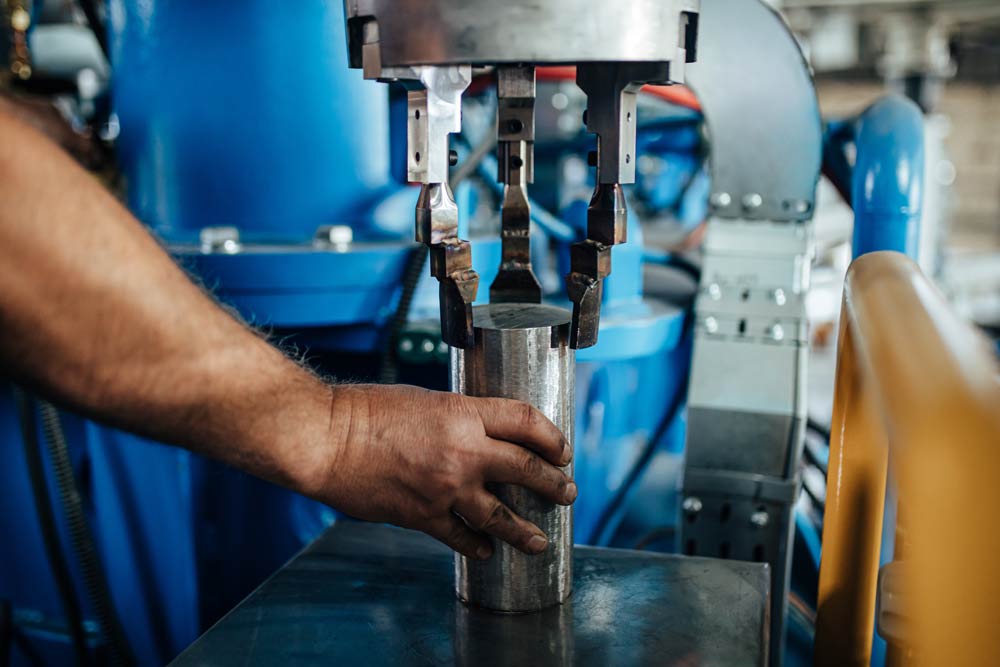Demand for high-strength, low-reactivity materials capable of meeting rigorous performance standards continues to increase. Enhancing base metals with additional elements expands and fine-tunes the final product’s potential applications. Innovations such as stainless steel for medical equipment and Ti-6Al-4V for aerospace applications are just the beginning.
One impressive alloying element, which can transform base metals into performance powerhouses, is zirconium. Thanks to its combination of strength, thermal stability, and corrosion resistance, adding up to 9% of the mineral acts as a hardener for metals like aluminum. As such, aluminum zirconium alloys are popular in high-performance industries such as the aerospace, nuclear energy, and automotive sectors.
The Properties of Zirconium
Zirconium is a hard, silver metal with the symbol Zr and atomic number 40. It melts at 3371 degrees Fahrenheit and boils at 7968.2 degrees Fahrenheit, demonstrating heightened resistance to heat, moisture, acids, alkalis, and seawater.
Additionally, zirconium doesn’t absorb neutrons, which is why production skyrocketed in the 1940s following the discovery of nuclear fission. Today, 90% of the world’s zirconium production is used in the nuclear industry.
Let’s explore zirconium’s properties in more detail:
- Strength and durability: Adding Zr to Al alloys in the amounts of 0.02-0.2wt% has been shown to increase the alloy’s strength by around three times. In aerospace, Al-Zr alloys in fuselage panels and wing structures ensure they can withstand the stresses of flight.
- Corrosion resistance: Because of their low thermal neutron capture cross-section and exceptional resistance to corrosion, zirconium alloys are commonly used as cladding for nuclear fuel rods. Ship hulls, propellers, offshore oil rigs, and rudders often contain zirconium to prolong lifespan and maintain structural integrity under relentlessly harsh conditions.
- Thermal stability: Zr is especially effective at improving thermal resistance in aluminum alloys, which is why it’s used in gas turbines, high-temperature fuel cells, diesel engines, and catalysts.
What Is Aluminum Zirconium?
Once zirconium is introduced to aluminum there are three key enhancements to the alloys:
- Enhanced strength: Tensile and yield strength improvements when combining Zr with Al are due to the formation of Al-3-Zr precipitates and subsequent grain refinement. This creates a more uniform grain structure that hinders dislocation movement — a primary mechanism of deformation in metals.
- Improved corrosion resistance: Al-3-Zr precipitates refine the grain structure. Fewer and smaller grain boundaries help prevent the ingress of corrosive agents, enhancing the alloy’s overall corrosion resistance.
- Increased thermal stability: Adding Zr to Al makes for a notably more temperature-resistant alloy than aluminum alone. It does this by increasing the surface layer’s microhardness by 1.4–3 times. Al-Zr can withstand significantly higher heat than other alloys.
Uses of Aluminum Zirconium
When zirconium meets aluminum, the result is an alloy capable of withstanding immense stress, making it ideal for use in:
- Aerospace: Aircraft frames, engine parts, and structural elements benefit from the enhanced ductility and durability zirconium provides, facilitating the manufacturing of lighter yet stronger aerospace vehicles.
- Automotive: Aluminum-zirconium alloys contribute to automotive performance and safety by strengthening critical components, such as chassis, engine blocks, and crash-resistant structures. Notably, this allows for weight reduction without compromising safety standards — a key factor in fuel efficiency.
- Nuclear: Aluminum-zirconium alloys play a vital role in nuclear reactors, thanks to their ability to withstand high radiation and extreme temperatures. Cladding, structural supports, and containment systems all benefit from the exceptional durability and resistance offered by zirconium, contributing to the safety and efficiency of nuclear power generation.
Custom Aluminum Zirconium Alloy Creation
Adding zirconium to aluminum creates a stronger, more corrosion-resistant and thermally stable alloy. Aluminum zirconium alloys are in high demand for applications in high-performance industries due to their ability to withstand demanding performance requirements.
Contact us if you’d like to know more about the custom creation of zirconium aluminum alloys.

